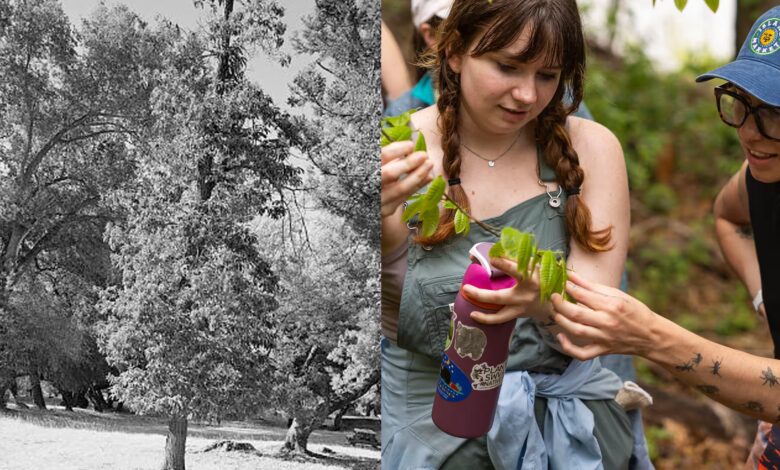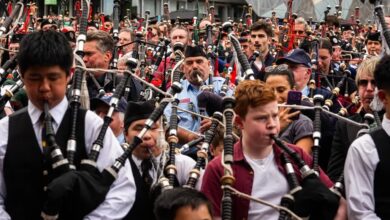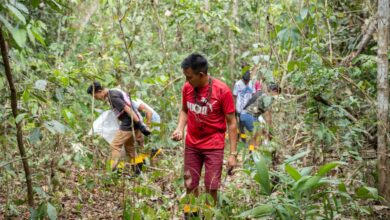
A historic image of chestnut trees in Olompali state historic park in California, and volunteers in New York city in 2025. Photo Credit: Brian Grogan, Library of Congress, Ben Hider, New York Restoration Project
Environment USACommunity Gathers Together to Bring Back Cherished Chestnut Tree
One hundred and twenty years after a mysterious fungus wiped out billions of American chestnuts, the cherished tree could make a comeback as dedicated scientists and eager New Yorkers join forces to plant blight-proof seeds in backyards and local parks.
“The interest has surprised us; this has really touched a nerve,” says Jason Smith, director of north Manhattan parks at the U.S. non-profit group New York Restoration Project. “We’ve had requests for many thousands of trees, more than the seeds we have.”
The blight – Cryphonectria parasitica – was first introduced in America from Asia. In 1904, chestnuts at the Bronx Zoo exhibited necrotic lesions on the bark, restricting access to water and nutrients. In the first half of the last century, approximately 4 billion trees were lost. To restore the species, the project leaders intended to plant 1,000 seeds, but due to a constrained availability of seeds garnered from plantings by the American Chestnut Foundation and the 230 or so remaining chestnuts scattered in New York, 400 seeds will be handed to successful applicants who will be required to track the seeds in the hopes that some of them will prove to be very disease-resistant. The restoration effort could expand the pool of immune trees and therefore steadily repopulate forests that have been decimated by chestnut blight.



